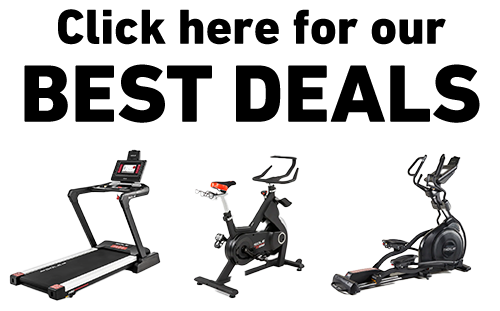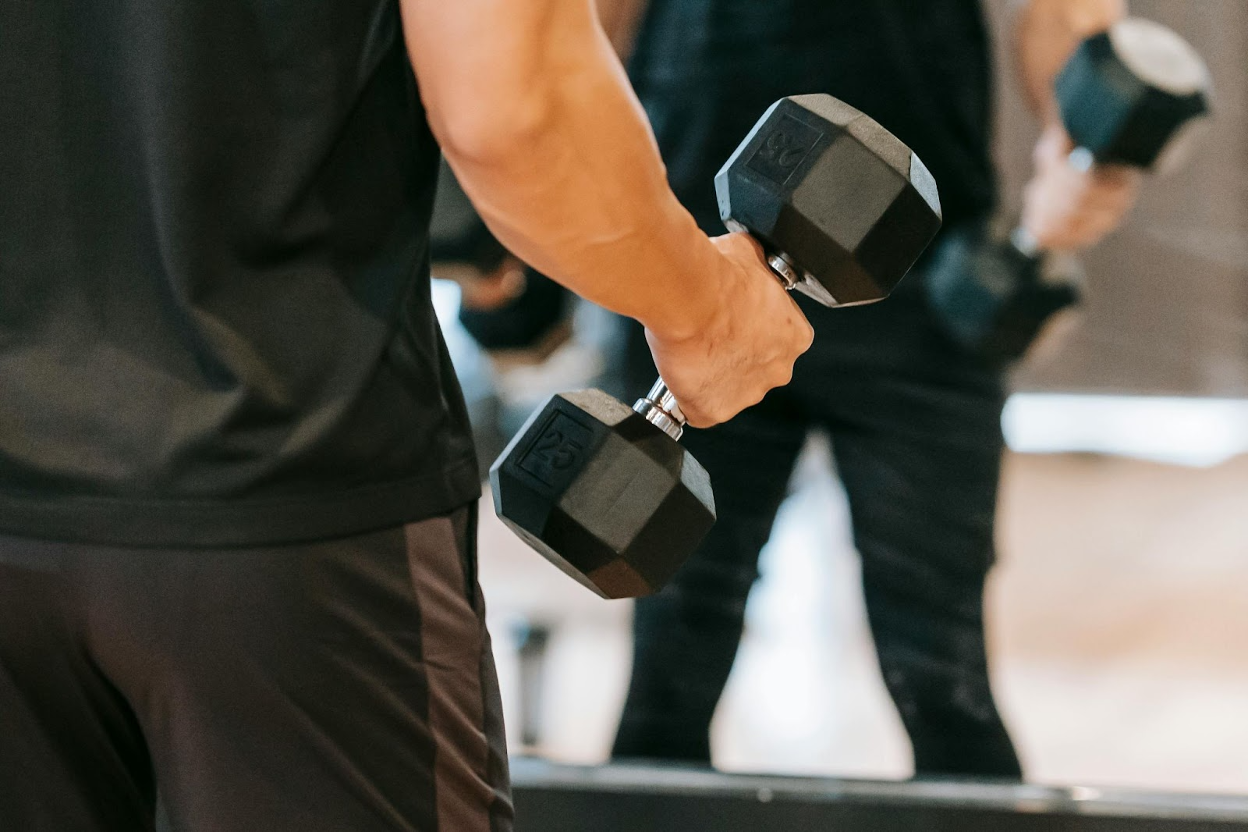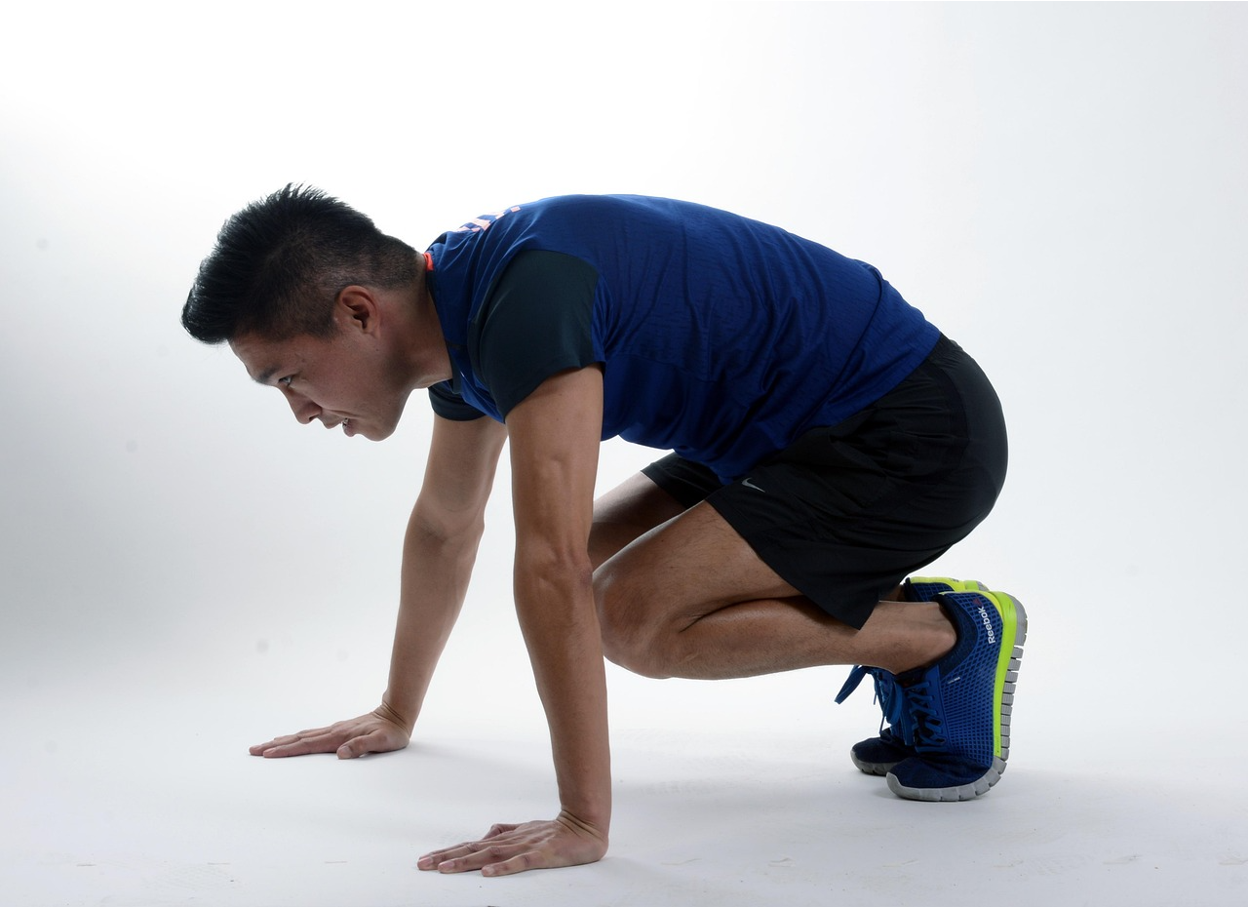Key Takeaways
- Single curls are excellent for improving the mind-muscle connection and correcting imbalances, as they let you focus on one arm at a time for better control and balance.
- Double curls are more efficient, saving time while engaging both arms together to build strength and symmetry with every rep.
- Muscle activation varies—single curls challenge stabilizers and control, while double curls allow you to lift heavier weights for maximum strength gains.
- Avoid mistakes like swinging with momentum, lifting too heavy too soon, or skipping rest days, since proper form and recovery are key for growth.
- SOLE SW180 Adjustable Dumbbells, ranging from 5–80 lbs, make progressive overload simple, save space, and pair with the free SOLE+ app for guided workouts and long-term results.
The Truth About Bicep Curls: Single vs Double Arm Technique
When building strong, well-defined arms, few exercises are as iconic as the bicep curl. This simple yet powerful movement has been a go-to for beginners and advanced lifters alike because of its direct impact on bicep size, strength, and shape.
But within this staple exercise lies a common question: is it better to train one arm at a time (single curls) or both arms together (double curls)? Each variation brings unique benefits to the table, from improving muscle balance to allowing heavier loads and greater efficiency.
Understanding how these techniques differ, and when to use each one, can help you maximize strength, symmetry, and overall arm development while avoiding common training mistakes.
|
Build Your Foundation with Premium-Grade Strength Equipment!
 Complete Your Home Gym:
Why Choose SOLE Strength: ✓ Heavy-duty steel construction with rust protection 30-Day Money-Back Guarantee: Love it or return it, no questions asked. |
Single Arm Bicep Curls: Benefits and Execution
Single arm curls, also called unilateral curls, allow you to focus on one arm at a time. This naturally slows the movement down, reduces momentum, and helps you achieve a stronger mind-muscle connection. Because you’re not splitting attention between arms, it’s easier to refine form and eliminate common errors like swinging or leaning.

Single-arm curls help correct muscle imbalances and strengthen each bicep individually.
Superior Mind-Muscle Connection
By concentrating on one arm, you can better feel the contraction, adjust your form, and ensure each rep is performed with full range of motion. This increased awareness often leads to stronger muscle engagement, especially when paired with controlled tempo or pauses at the top of the movement.
Fixing Muscle Imbalances Between Arms
Most people have a stronger side without realizing it. Single curls bring imbalances to light and help correct them by forcing each arm to work independently. Over time, this builds symmetry, both in strength and in appearance, which is especially important if you notice uneven development in your arms.
When to Choose Single Arm Curls in Your Workout
They’re best when you want to isolate each arm, address strength differences, or add focused accessory work at the end of your training session. Single curls also pair well with drop sets or burnout sets, making them a smart choice when you want to finish a workout with maximum muscle fatigue.
Double Bicep Curls: Advantages and Proper Form
Double curls allow you to train both arms simultaneously. This makes them ideal for lifters who want to build strength efficiently in less time. Since each rep targets both arms, you can complete more volume in fewer sets, which is especially useful for people balancing strength training with a busy schedule.
Core Stability Enhancement
Because both arms move together, your torso has to stabilize throughout the lift. This creates subtle engagement in your core and helps develop overall body control. Over time, maintaining this upright posture under load also supports better lifting mechanics in other upper-body movements.
Balanced Development Across Both Arms
Double curls encourage both biceps to work in sync, ensuring symmetrical activation and balanced growth when performed with proper form. They also minimize the tendency to “favor” one side, which can happen when fatigue sets in during single-arm work.
Ideal Double Curl Technique for Beginners
For those new to resistance training, starting with double curls is often easier. The movement feels more natural and helps beginners master basic curling mechanics. Using a barbell or pair of dumbbells in this variation can also build a solid foundation of strength before progressing to more advanced isolation work like single-arm curls.

Double curls activate core stabilizers as your torso works to maintain posture.
Muscle Activation Differences Between Curl Variations
Primary Muscles Targeted in Each Variation
Both single and double curls primarily target the biceps brachii, the muscle responsible for flexing the elbow and giving the arms their peak shape. No matter which variation you choose, the biceps remain the main driver of the movement.
Secondary Muscle Engagement Comparison
Single curls place more demand on stabilizers like the forearms, brachialis, and shoulders because each arm works independently. This adds an extra layer of control and grip strength. Double curls, by contrast, spread the effort evenly across both arms and rely more on the core to keep the body stable during heavier loads.
Neuromuscular Recruitment Patterns
Single curls require greater focus and coordination, which can enhance neuromuscular recruitment and improve control over smaller muscles. Double curls, on the other hand, generate a stronger bilateral drive, letting you lift more weight overall and build greater raw strength.
Weight Selection Strategy for Each Curl Type
You won’t be able to lift the same weight in both variations. With single curls, each arm has to stabilize the weight on its own, which usually means working a bit lighter. Double curls feel more stable, so you can push heavier loads overall.
For single curls, progressive overload should come from adding weight and from improving control, range of motion, and time under tension. Slowing the rep or holding the squeeze at the top can be just as effective as adding extra pounds.
With double curls, increase weight once you can complete 10–12 clean reps with strict form. Make small, steady jumps to avoid compromising technique in the pursuit of heavier loads.
Single vs Double Bicep Curls: Key Comparison
|
Aspect |
Single Arm Curls |
Double Arm Curls |
|
Mind–Muscle Connection |
Strong isolation, better contraction awareness, perfect for refining form. |
Good for overall strength but less focus on individual arm control. |
|
Muscle Symmetry |
Highlights and corrects left-right strength or size imbalances. |
Promotes even growth when both arms move in sync. |
|
Strength Potential |
Limited load per arm due to stability demands. |
Supports heavier weights, great for raw strength building. |
|
Time Efficiency |
Slower, trains one arm at a time. |
Faster, works both arms together in fewer sets. |
|
Core & Stability |
Engages forearms, shoulders, and stabilizers more. |
Adds subtle core engagement for posture and body control. |
|
Best For |
Intermediate/advanced lifters correcting weaknesses or chasing detail. |
Beginners or those seeking strength, volume, and efficiency. |
Common Mistakes to Avoid with Each Curl Variation
Even the best curl variations lose effectiveness if performed incorrectly. Paying attention to these common mistakes will help you get the most from your training and avoid stalled progress.
1. Form Errors That Reduce Effectiveness
One of the most common mistakes is swinging the arms or rocking the torso to move the weight. This reduces tension on the biceps and shifts the work elsewhere. Partial reps that don’t extend the arm fully also limit activation. Leaning backward to curl heavier weights is another form breakdown that often leads to strain rather than strength.
2. Overtraining Pitfalls
Training biceps every day may feel productive, but it quickly stalls growth. Muscles grow when given time to recover, so aim for 2–3 bicep-focused sessions per week. Pairing curls with compound pulling movements ensures balanced progress without overtaxing the arms.
3. Progression Mistakes That Stall Growth
Adding weight too quickly is a fast track to poor form and stalled results. Another common issue is prioritizing heavier loads over proper technique. The most effective way forward is steady, progressive overload combined with strict execution and full range of motion.
The Final Rep: Which Curl Variation Wins?
There isn’t a clear winner between single and double curls—each serves a unique purpose. Single curls are unmatched for improving control, isolating each arm, and correcting imbalances that could otherwise limit long-term progress.
Double curls, on the other hand, stand out for efficiency, strength gains, and balanced activation across both arms.
The smartest approach is to include both variations in your training plan, using singles for focus and precision, and doubles for overall load and power. Together, they deliver the most complete path to stronger, well-defined biceps.
Power Your Curls with SOLE Adjustable Dumbbells

Compact design makes the SW180 perfect for home gyms with limited space.
For single vs double bicep curls, progression and consistency are key—and that’s where the SOLE SW180 Adjustable Dumbbells (80lbs) come in. Designed for both beginners and advanced lifters, these dumbbells give you the flexibility to train smarter and stronger without needing an entire rack of weights.
Why they’re a game-changer for curls:
- Adjustable from 5lbs to 80lbs for progressive overload.
- Includes two dumbbells for balanced bilateral or focused unilateral training.
- Compact and space-saving, perfect for home gyms.
- Built with heavy-duty steel for long-lasting durability.
- Seamlessly integrates with the SOLE+ App, giving you free access to guided workouts and expert-led classes.
These features make the SW180 the ideal tool to maximize your bicep training, if you’re fixing imbalances with single curls or powering through heavy double curls. With SOLE, you’re not just lifting weights—you’re unlocking a smarter way to train, recover, and grow stronger.
Frequently Asked Questions (FAQs)
Should I do single or double bicep curls?
Both variations are highly effective. Single curls isolate one arm at a time, helping fix imbalances and improve control, while double curls allow greater strength and efficiency. For the best overall results, include both in your regular training routine.
How often should I train my biceps?
Training biceps daily is unnecessary and counterproductive. Aim for 2–3 focused sessions per week, allowing at least 48 hours of rest between workouts. This balance ensures recovery, prevents overtraining, and supports consistent muscle growth and strength progression over time.
What’s the biggest mistake people make with curls?
The most common mistakes include using momentum instead of muscle, performing partial reps without full extension, and lifting weights too heavy too soon. Prioritizing proper form, control, and range of motion will deliver far better results than chasing heavier loads.
What’s the difference between alternating curls and simultaneous curls?
Alternating curls train one arm at a time, enhancing stability, focus, and control, while simultaneous curls work both arms together, maximizing efficiency and bilateral strength. Incorporating both into your routine provides balance, symmetry, and variety for effective bicep development.
Why choose adjustable dumbbells over fixed weights?
Adjustable dumbbells, such as the SOLE SW180 (5–80lbs), save space by replacing an entire rack of weights. They reduce clutter, offer smooth progression for different fitness levels, and are more cost-effective, making them perfect for versatile, long-term home gym setups.







Leave a comment
This site is protected by hCaptcha and the hCaptcha Privacy Policy and Terms of Service apply.